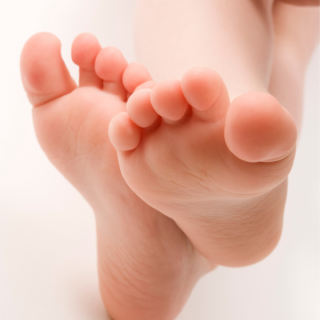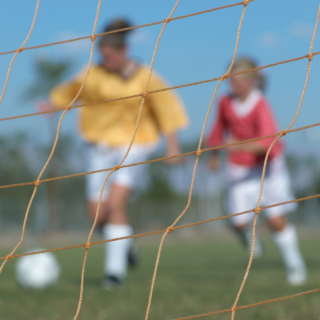 Heel pain is a symptom, not a disease. In other words, pediatric heel pain is a warning sign that a child has a condition that deserves attention.
Heel pain is a symptom, not a disease. In other words, pediatric heel pain is a warning sign that a child has a condition that deserves attention.
Heel pain problems in children are often associated with these signs and symptoms:
- Pain in the back or bottom of the heel
- Limping
- Walking on toes
- Difficulty participating in usual activities or sports
The most common cause of pediatric heel pain is a disorder called calcaneal apophysitis (see below), which usually affects 8- to 14-year olds. However, pediatric heel pain may be the sign of many other problems and can occur at younger or older ages.
What Is the Difference Between Pediatric and Adult Heel Pain?
Pediatric heel pain differs from the most common form of heel pain experienced by adults (plantar fasciitis) in the way pain occurs. Plantar fascia pain is intense when getting out of bed in the morning or after sitting for long periods, and then it subsides after walking around a bit. Pediatric heel pain usually doesn’t improve in this manner. In fact, walking around typically makes the pain worse.
Heel pain is so common in children because of the very nature of their growing feet. In children, the heel bone (the calcaneus) is not yet fully developed until age 14 or older. Until then, new bone is forming at the growth plate (the apophysis), a weak area located at the back of the heel. Too much stress on the growth plate is the most common cause of pediatric heel pain.
Causes of Pediatric Heel Pain
There are a number of possible causes for a child’s heel pain. Because diagnosis can be challenging, a podiatrist is best qualified to determine the underlying cause of the pain and develop an effective treatment plan.
Calcaneal apophysitis, also known as Sever’s disease, is the most common cause of heel pain in children. Although not a true “disease,” it is an inflammation of the heel’s growth plate due to muscle strain and repetitive stress, especially in those who are active or obese. This condition usually causes pain and tenderness in the back and bottom of the heel when walking, and the heel is painful when touched. It can occur in one or both feet.
Tendo-Achilles bursitis is a condition caused by an inflammation of the fluid-filled sac (bursa) located between the Achilles tendon (heel cord) and the heel bone. Tendo-Achilles bursitis can result from injuries to the heel, certain diseases (such as juvenile rheumatoid arthritis), or wearing poorly cushioned shoes.

Overuse syndromes occur because the heel’s growth plate is sensitive to repeated running and pounding on hard surfaces, pediatric heel pain often reflects overuse. Children and adolescents involved in soccer, track, or basketball are especially vulnerable. One common overuse syndrome is Achilles tendonitis. This inflammation of the tendon usually occurs in children over the age of 14. Another overuse syndrome is plantar fasciitis, which is an inflammation of the band of tissue (the plantar fascia) that runs along the bottom of the foot from the heel to the toes.
Fractures can also cause heel pain as it is a break in the bone. Stress fractures, hairline breaks resulting from repeated stress on the bone, often occur in adolescents engaged in athletics, especially when the intensity of training suddenly changes. Another type of break-acute fractures happens to children under 10 and can result from simply jumping 2 or 3 feet from a couch or stairway.
Diagnosis of Pediatric Heel Pain
To diagnose the underlying cause of your child’s heel pain, a podiatrist will first obtain a thorough medical history of the patient and ask questions about the patient’s recent activities. The child’s foot and heel will be examined and an x-ray will be conducted. In some cases, the doctor will order a bone scan, a magnetic resonance imaging (MRI) study, or a computerized tomography (CT or CAT) scan. Laboratory testing may also be ordered to help diagnose other less prevalent causes of pediatric heel pain.
